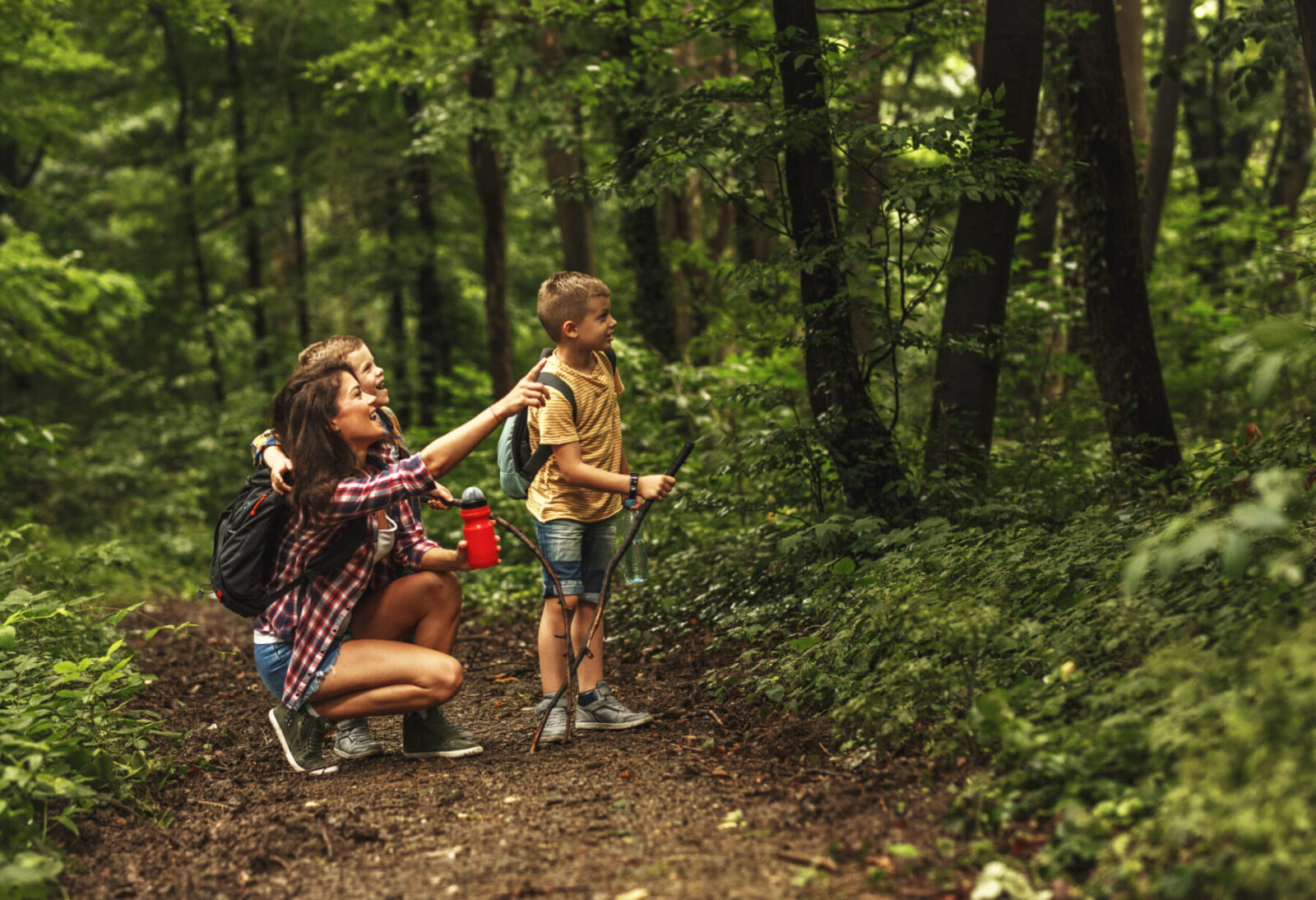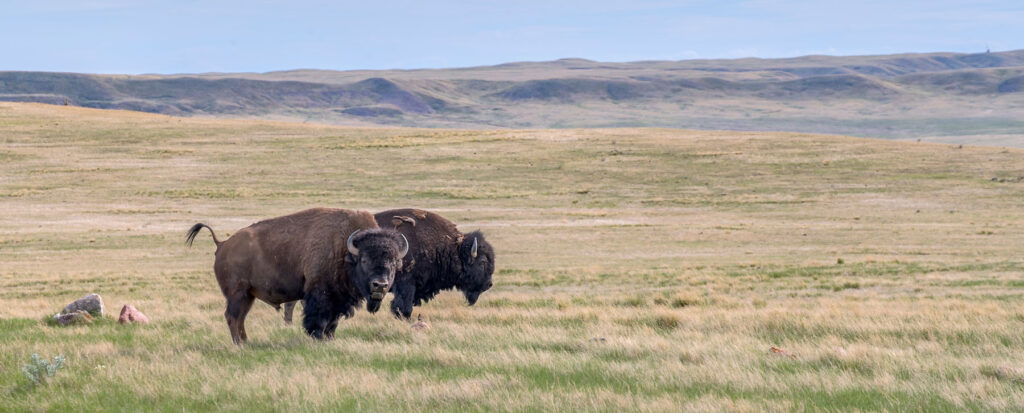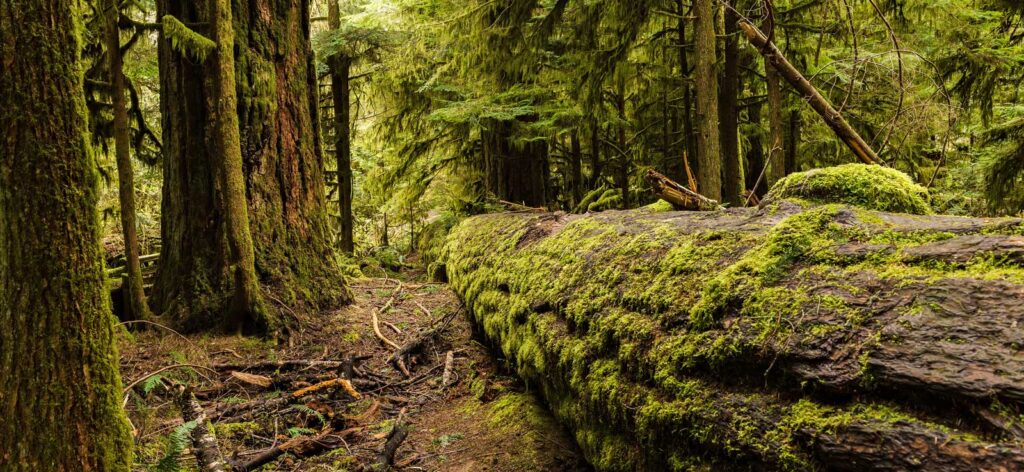As many of us await the slow return of warm weather across Canada, it may not be the time of year city residents associate with visiting a park to spend time in nature. But what if it was possible to connect with green (or white?!) space in a national park near your doorstep?
Picture snowshoeing, hiking or watching birds with your family and friends in an urban setting that conserves nature while fostering inclusive spaces that honour and celebrate Indigenous cultures. And when the snow finally melts for those of us still waiting, these sites will help cities adapt to the impacts of climate change by providing flood management and cleaner water, and, come summer, they may cool temperatures in hot urban centers.
Vision
This is Parks Canada’s vision for a network of unique national urban parks (NUPs) developed in partnership with local communities and governments. In 2021, the federal government committed to establish 15 NUPs and so far, six candidate sites have been identified.
The creation of protected areas requires thoughtful planning, knowledge gathering, and meaningful engagement to achieve impactful and widely supported nature conservation. Although only one NUP currently exists, a new one in Windsor is hopefully getting close to completion and many other NUP candidate sites have been proposed across the nation, with each location having unique challenges and opportunities. CPAWS Chapters have been involved in advancing many of these sites!
Last summer, Parks Canada also released its Interim National Urban Parks Policy, which will be used to guide the designation and management of new national urban parks across Canada.
Achievement
In January 2025, CPAWS celebrated the expansion of Rouge National Urban Park. Located in the Greater Toronto Area and Canada’s only established NUP – CPAWS is excited to see conservation progress in an ecologically significant and agriculturally productive landscape. An anticipated 35 km2 of permanently protected greenspace will be added to Rouge NUP with the transfer of the former Pickering Airport Lands. Twenty percent of Canada’s population is located within an hour’s drive to the NUP and it is fully accessible by public transit1 so access to a vast swath of nature with many outdoor opportunities just got a lot easier for many! For an in-depth, on the ground update of the Rouge expansion, check out this news post by Wildlands League.

Map: Pickering Lands expansion into Rouge National Urban Park by Wildlands League
Progress
NUP Sites in the Planning Phase
Windsor, Ontario
Located in Windsor, Ontario, the Ojibway Prairie Complex – the most endangered ecosystem in Canada – is advancing to become Canada’s second National Urban Park. There is support from all parties, including local First Nations, the city of Windsor, the province of Ontario and the federal government. In April 2024 Parks Canada secured funding in the federal budget to establish and manage the park. A private members bill (C-248) was making its way through Parliament last fall, and we hope this will continue after the federal election. Last month, long-term funding was confirmed and a commitment made to establish the park this year. This is good news; however, much remains to be done to get there, including completing agreements with First Nations partners and assembling and protecting all the parcels of land identified for the park.
To find out more about Ojibway, visit the Partner Website.
Halifax, Nova Scotia
The Blue Mountain-Birch Cove Lakes site near Halifax, Nova Scotia was announced as a candidate NUP in 2021 and successfully met requirements of the pre-feasibility phase* for park establishment in 2023. This included demonstrating stakeholder support from all levels of government, local landowners, and Indigenous groups, as well as conducting site-specific studies to identify an area of interest and assess its alignment with the NUP program objectives. Currently, all levels of government are supportive and collaborating. Blue Mountain-Birch Cove Lakes is located only 10 km from downtown Halifax and contains important Acadian Forest – both hard and softwood trees – lakes, waterways, and recreational areas. The site already contains some protection, including a wilderness area designated by the provincial government, and targeted land purchases by the municipal government and Nova Scotia Nature Trust. A Park Establishment Plan guiding management of public access, nature-based recreational activities, and protection of the proposed park’s ecological and cultural resources is in development.
Other NUP Candidate Sites
Several other cities across Canada also have candidate sites for NUPs that, although not as far along as Halifax and Windsor, would bring conservation benefit to people and nature, close to home.
Edmonton, Alberta
The North Saskatchewan River Valley and connected creeks and tributaries are an important ecological corridor within the Edmonton region, creating an excellent opportunity for a NUP to secure the area’s conservation value. The City of Edmonton along with project partners including Parks Canada, the Confederacy of Treaty Six First Nations, the Otipemisiwak Métis Government have been engaged in the pre-feasibility step, exploring the potential of a NUP with the government of Alberta participating as an observer. The project is awaiting progression to the planning stage.
To take your own trip down the North Saskatchewan River and learn more about what a National Urban Park could protect in Edmonton, visit CPAWS Northern Alberta’s Story Map.
Saskatoon, Saskatchewan
The Meewasin (miýwâsin is Cree for ‘it is beautiful’) Valley, running through the city of Saskatoon, covers 67 square kilometers of land boasting over 105 km of beautiful river trails and is home to an abundance of plants and animals, making it a perfect NUP candidate site. Creating a NUP here is the ideal opportunity to embrace urban conservation, and to enhance and restore nature in the river valley. CPAWS Saskatchewan will continue to ensure that healthy, viable ecosystems and ecological integrity remain at the forefront of the planning process.
To learn more about the potential NUP in Saskatoon, click this link!
Last But Not Least
Ottawa, Ontario
The National Capital Greenbelt, located on unceded Algonquin territory, is a sanctuary for all Ottawa residents and visitors to the city, but it is largely unprotected. With over 180 km of recreational pathways, more than 3 million residents and visitors use the Greenbelt each year. The Greenbelt is home to over 60 species at risk, of which 35 spend their entire lives here, and it is the site of one of the longest running climate change studies in the world.
CPAWS Ottawa Valley is campaigning to protect the future of the Greenbelt by obtaining NUP candidate site status for this vitally important place.
Other Sites
Parks Canada is also exploring NUPs in Victoria, BC and St John’s, NL. CPAWS is keeping an eye on these sites and look forward to seeing them move forward.
What can you do?
Sign up to the CPAWS national monthly newsletter to stay informed on progress on National Urban Parks.
Follow along and support CPAWS Chapters actively involved in NUP campaigns:
- Nova Scotia: Blue Mountain-Birch Cove NUP
- Wildlands League: Ojibway Prairie Complex NUP
- Northern Alberta: Edmonton NUP
- Saskatchewan: Meewasin Valley NUP
- Ottawa Valley: National Capital Greenbelt
Contact your local Member of Parliament and tell them you support a National Urban Park in your city, and across Canada.
Learn more about National Urban Parks:
- Rouge National Urban Park – the first of its kind in Canada!
- National Urban Parks – Parks Canada’s information hub on NUPs
- PaRx A Prescription for Nature – an initiative of the BC Parks Foundation
Photo: Green heron by Ashley Hockenberry
*What does “pre-feasibility” mean with respect to NUPs?
Parks Canada states that pre-feasibility is a process that is “…is locally-driven and flexible.” In the case of Blue Mountain-Birch Cove Lakes, the site has achieved key milestones, allowing it to move to the next step in the NUP designation process – the Planning Phase. Steps included:
In July 2021, A Statement of Collaboration was signed between the Halifax Regional Municipality and Parks Canada. In this agreement, the two parties agreed to work together to assess whether Blue Mountain-Birch Cove Lakes aligned with Parks Canada’s NUP designation guidelines.
In April 2022, Parks Canada and the Halifax Regional Municipality launched stakeholder and public engagement sessions to identify and discuss relevant challenges and opportunities surrounding the potential NUP designation.
A Partner Group was formed in May 2022 to provide oversight and guidance throughout the pre-feasibility and planning phases of the NUP designation process. Current member governments and organizations include: the Halifax Regional Municipality, Kwilmu’kw Maw-klusuaqn, Nova Scotia Nature Trust, Parks Canada, Province of Nova Scotia, and Sipekne’katik First Nation. This group has held discussions on the overall park vision, boundary, and governance model.
Note: to ensure appropriate stewardship, Mi’kmaw partners, in collaboration with Parks Canada, are co-developing a meaningful engagement approach. This aims to honour nation-to-nation and government-to-government relationships, promoting reconciliation and understanding between partners. The Mi’kmaq of Nova Scotia are continuing this work in a pre-feasibility phase, and the overall NUP pre-feasibility report will be revised to contain Mi’kmaw perspectives.
For more information on the Blue Mountain-Birch Cove Lakes NUP designation process, check out Parks Canada’s Candidate national urban park interim pre-feasibility report.
Banner Photo: Balance Form Creative
Other stories you might be interested in:




